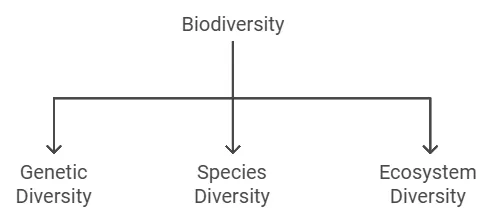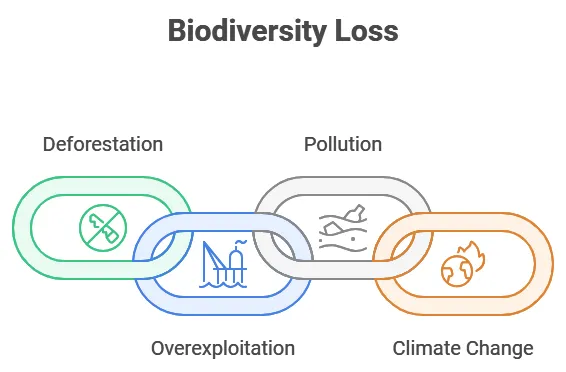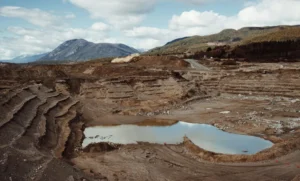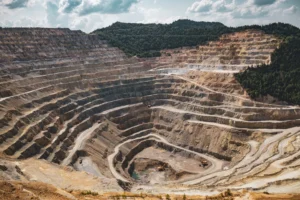Biodiversity is the many different kinds of living things on Earth. It’s a big, colorful puzzle with many pieces. Each piece has varied animals, plants, and other forms of organisms. These pieces fit together to make a beautiful and healthy world.
We already know about millions of different kinds of living things, but we have knowledge of only 2 million of them. It means there are many other species which have not yet been found yet. There are an estimated 8.7 million kinds of living things on Earth.
Keeping our planet healthy requires ecosystem conservation and species preservation. Every form of life has its job to do. For example, bees assist in making flowers grow and worms in making the soil fertile.
This is not something which only scientists care about. More importantly, it impacts your everyday life than you would think; it makes sure that food tastes good, the air is clean, and medicine works.
It would be very difficult to carry on farming without biodiversity. Did you know that plants produce more than 80% of the food we all enjoy and most of the plants cannot reproduce unless pollinated by bees or butterflies.
Nature is also an important basis for many cultures in the world for their customs and knowledge. Preserving biodiversity maintains these cultures to stay strong and connected to the rest of the world.
Biodiversity Definition
The term biodiversity, derived from “biological diversity,” refers to the variety of life on Earth, including all plants, animals, fungi, and microorganisms. It encompasses the genetic diversity within species, the variety of species, and the diversity of ecosystems.
What is Biodiversity

Biodiversity is the amazing variety of life on Earth, which includes all kinds of plants, animals, and other living things. It is the foundation of life on Earth, which sustains the balance of ecosystems and ensures the survival of countless species, including our own.
Biodiversity is important to keep our planet healthy. It helps in purifying the air and water, gives food, and controls climate. It also guards against natural disasters and keeps us fit.
Types of Biodiversity

Biodiversity means lots of different kinds of living things on Earth. There are three kinds of biodiversity:
- Genetic diversity means that different animals and plants belonging to the same kind often differ in appearance or behavior. This enhances their survival whenever conditions change.
- Species diversity means that there can exist many different kinds of animals and plants in one area. This helps to keep the place healthy and strong.
- Ecosystem diversity means that there are many different kinds of places where animals and plants live. This helps to keep the whole planet healthy and strong. For example, a planet with many types of forests, grasslands, and oceans will probably survive climate change more easily than one with just one type of ecosystem.
Biodiversity is important to both planet health and human well-being. It provides us with primary resources such as food, medicine, clean air, and water. Ecosystems, which are made up of connected species, maintain our climate and safeguard against natural disasters.
One of the most prime objectives of protecting biodiversity is wildlife conservation, it guarantees that ecosystem conservation and species preservation is maintained, meaning species, habitat, and ecosystems developed there are safe.
Without environmental sustainability and ecological restoration efforts, these ecosystems may become vulnerable, thus impacting the biodiversity we rely on.
By focusing on environmental sustainability and ecological restoration, we ensure these processes continue to support our food systems.
Threats to Biodiversity
Human activities are the main cause of biodiversity loss. The most significant threats include deforestation, habitat destruction, overexploitation of resources, pollution, and climate change.
Deforestation, mainly caused by agriculture and logging, results in the removal of habitats and disrupts ecosystems. Overexploiting resources, like overfishing and excessive hunting, further depletes populations and can lead to extinction.
Pollution, including plastic waste, industrial chemicals, and agricultural runoff, can contaminate habitats and harm species.
Climate change, which is caused by human-induced greenhouse gas emissions, destroys the ecosystems and dislocates the species from their habitats.
Loss in biodiversity leads to devastating effects, including climate changes, food shortages, and even extinction of species. These threats are interconnected and can intensify one another. Such facts make the need for conserving and protecting future biodiversity paramount.

More Information and Examples
Case Study: The Importance of Coral Reefs
Coral reefs support many species of aquatic life, they rank among the most diverse ecosystems on Earth. Coral reefs are important for the environment and for supporting fishing, coast protection, and tourist revenue.
These reefs are threatened by overfishing, acidifying of the oceans, and changing climate. The saving of such important ecosystems is maintained using sustainable techniques and support to initiatives. This will make sure that it exists for the next generations.
The Role of Biodiversity in Food Security
Biodiversity in the ecosystem is important as it provides a basis for maintaining food supplies globally. It helps keep farming going even when times get tough. Different plants and animals are better at surviving diseases, pests, and extreme weather. This means that we are less likely to lose crops and have food shortages.
Thus, securing biodiversity is very important since this can ensure that we should continue producing enough food-even during hard times-brought by climate change and several issues.
FAQ's
What is biodiversity and why is it so important?
Biodiversity is the variety of life on Earth, and it’s important for ecosystem stability, providing us with essential resources such as food, medicine, and clean air and water.
Why is biodiversity important for ecosystems
Biodiversity maintains ecosystem stability by providing resilience, regulating essential processes such as nutrient cycling and pollination, and supporting a vast array of life forms.




